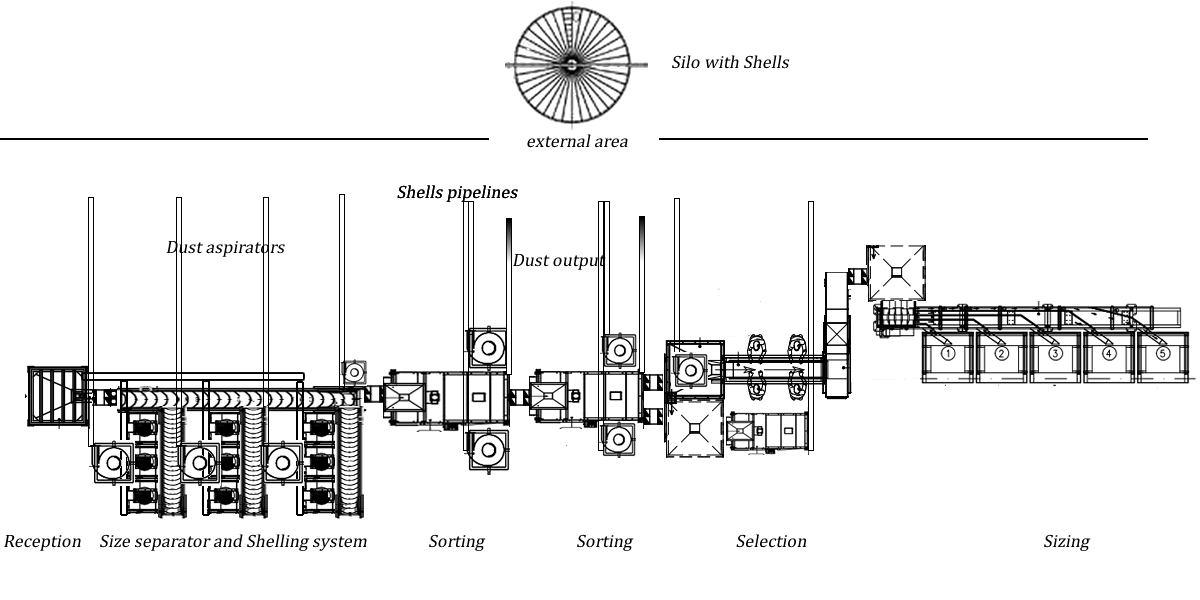Professional almond shelling machines
Complete almond shelling lines
We manufacture complete turnkey almond shelling lines suitable for almonds with soft shell (Non pareil, Carmel), semi-hard (Butte, Monterey, Texas/Mission, ferragnes, Lauranne Avijor, Soleta, Constantí, Antoñeta, Filippo Ceo, Tuono, Guara, Makako e.t.c.) as well as for hard varieties (vairo, penta, largueta, marinada)
Depending on the almond variety, the almonds turnkey processing machine consists of different equipment such as receptions hoppers, conveyors, size separators, core almonds shellers / crackers with speciallized designed almond hammers/cracker, vibratory decks, air aspirations that removes the shells, dust, sticks, as well as size separators, silos, picking / sorting tables, graders e.t.c. The shelling lines can be merged with an almond sizing line and a color sorting machine.


The input processing capacity is:
- 125 kg / h
- 250 kg / h
- 500 kg / h
- 800 kg / h
- 1000 kg / h
- 2000 kg / h
- 4000 kg / h
We also manufacture turnkey complete almond processing lines according to clients request.
After almonds are harvested, they undergo three processing phases:
- The hulling phase where the almond processing facility produce hulled almonds and in-shell almonds as a final product (known as hullers),
- The shelling phase, where the almond processing facility produce shelled, almond meats as a final products known as shellers.
- The manufacturing phase, where the hulled, shelled almond meats are undergo further processing into various end products such as natural or blanched whole, slivered, diced, or floured almonds.
In the hulling phase, the almonds are delivered to the processing facility, dumped into a receiving pit and then transported by conveyors and elevators to a series of destoners, and shakers. The shakers selectively remove collected debris. Detwiggers are used to remove twigs and small sticks, likely in combination with screening for dirt removal. A destoner removes stones, dirt clods, and other larger debris such as glass and metal. After destoning, almonds are conveyed onto a series of shear rolls, which remove the almond hulls using a shearing action. Aspirators are used in conjunction with shear rolls to separate the shell and hull removed from the almonds.
The shelling phase includes additional steps to remove the almond meats from their shells. In huller/shellers, the inshell almonds continue through the process, which includes inshell sizers, crackers, shear rolls, aspirators, sizing shakers, split decks, and final inspection tables.
The almond meats are now ready either for sale as raw product or for further processing, typically at a separate facility. The meats can be blanched, sliced, diced, roasted, salted, or smoked. Small meat pieces may be ground into meal or pastes for bakery products. Almonds are roasted by gradual heating in a continouous roasting belt. First almonds are preheated, heated and finally cooled.




